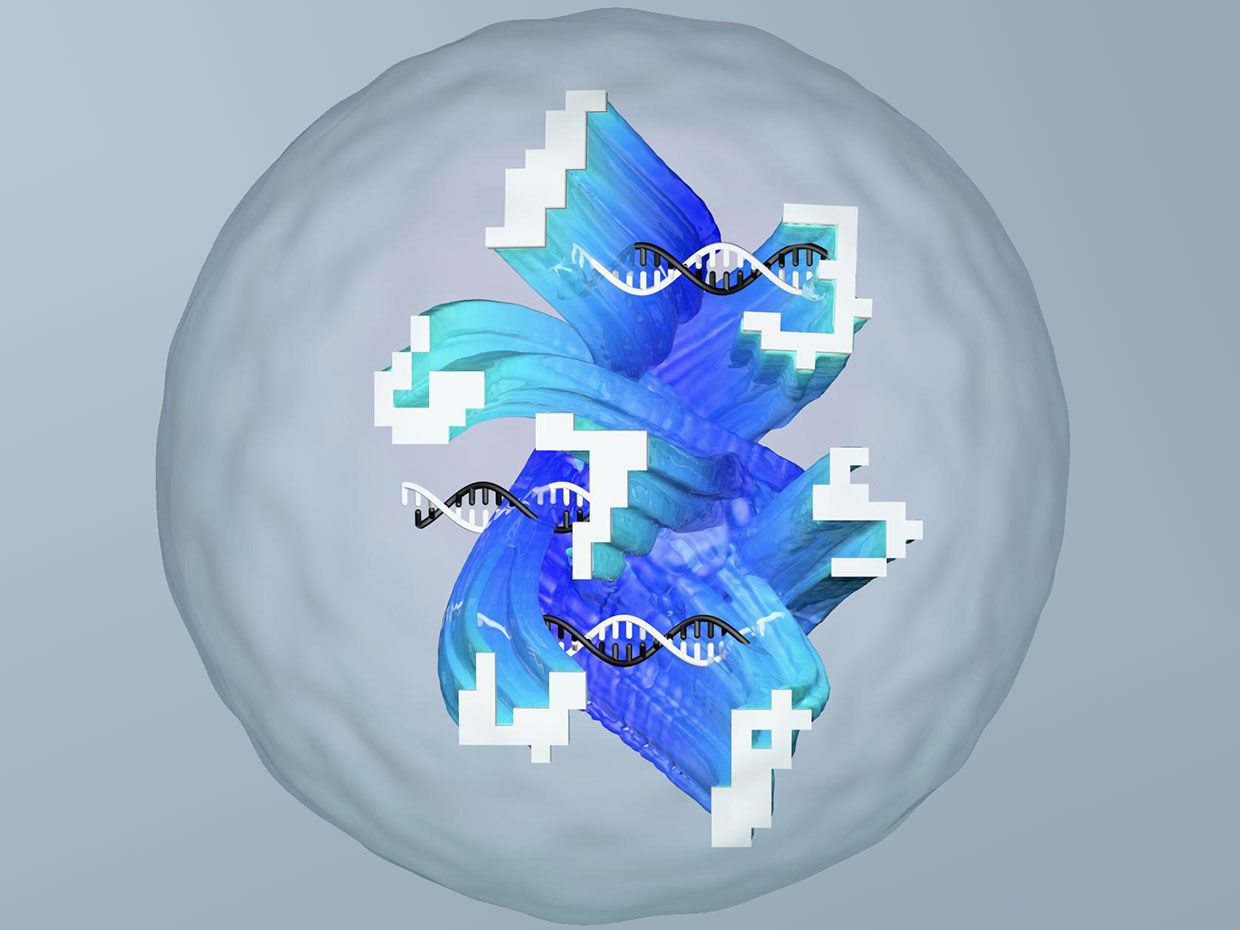July 12, 2018 at 12:45PM
via IEEE Spectrum Recent Content

An artificial neural network made of DNA can recognize numbers written using molecules, a new study finds.
These new findings suggest that DNA neural networks could also recognize other patterns of molecules, such as ones signaling disease, researchers add.
In artificial neural networks, components dubbed neurons are fed data and cooperate to solve a problem, such as recognizing handwriting. The neural net repeatedly adjusts the behavior of its neurons and sees if these new patterns of behavior are better at solving the problem. Over time, the network discovers which patterns are best at computing solutions. It then adopts these as defaults, mimicking the process of learning in the human brain.
In 2011, bioengineer Lulu Qian at the California Institute of Technology and her colleagues developed the first neural net made of DNA, which possessed four artificial neurons that each accepted four input signals and altogether were made up of 72 different kinds of DNA molecules. In the new study, Qian and study lead author Kevin Cherry developed a more complex DNA neural net of six artificial neurons that each accepted 100 input signals and together were composed of 225 distinct kinds of DNA molecules.
DNA is made of four kinds of smaller molecules known as nucleotides (abbreviated A, T, C and G) that are arranged in strands. Nucleotides in one strand of DNA can only bond with nucleotides in another strand in very specific ways—A only bonds with T, and C only with G. Using these predictable binding rules, scientists can use interactions between DNA molecules to perform computations.
The researchers synthesized both single-stranded and partially double-stranded molecules of DNA that floated around in saltwater. When single-stranded DNA molecules found partially double-stranded molecules with complementary sequences, they bonded, causing the partially double-stranded molecules to shed the strands of DNA that were previously on them.
The single-stranded DNA molecules that successfully bonded with the partially double-stranded DNA molecules served as the system's inputs, while the strands kicked off by the bonding DNA molecule served as the system's output. Once released, an output strand can in principle serve as an input strand by interacting with yet another partially double-stranded DNA molecule, leading to a network of molecular interactions that can run complex computations, Qian says.
"Artificial intelligence in a test tube is very different from that in a Hollywood movie," Qian says. "The question that we are interested in is how much intelligence can be programmed into molecular machines."
In this new study, each artificial neuron is composed of a collection of these interacting DNA molecules. The behavior of each neuron is determined by the concentrations of each partially double-stranded DNA in the test tube were the interactions take place.
The scientists used their DNA neural net to perform a version of a common challenge for electronic artificial neural networks—recognizing handwritten numbers. In this task, neural nets must learn how to recognize numbers, account for variations in handwriting, and then compare an unknown number to their memories and decide that number's identity.
The DNA neural net was used to accurately identify "molecular handwriting." Specifically, the neural net had to recognize a series of patterns each made of 20 unique DNA strands chosen from a set of 100. Each of these patterns corresponded to 20 pixels in a 10-by-10 grid, representing a handwritten digit ranging from 1 to 9.
In experiments, this DNA neural net could successfully identify all nine digits, including when up to 30 pixels were added to or subtracted from these numbers, much as if a person had sloppily written a number that might be either a 4 or a 9.
There are many potential applications for a DNA neural net that can recognize complex patterns of molecules, the researchers say.
"Imagine a test-tube artificial intelligence that is smart enough to detect complex biochemical signals and make better decisions than humans based on information directly obtained from molecules within the nanoscale world—for example, recognizing harmful conditions in foods and air, or recognizing diseases in blood samples," Qian says.
The researchers do caution their DNA neural nets compute very slowly. Currently, "it takes several hours to recognize a molecular pattern," Qian says. However, using techniques such as arranging DNA molecules on scaffolds to foster more efficient interactions "could potentially make the DNA neural networks compute much faster—say, in minutes," she says.
Although an electronic neural net can also in principle recognize patterns of molecules, "if that information is in the molecules in a wet environment, it must first be captured and turned into a format the computer can read—for example, a patient's disease may be recognized by sequencing their DNA and analyzing the data on a computer before deciding on a treatment," Cherry says. "But what if we built a computer capable of working directly within that wet environment? It could interact with that DNA, analyze it, and make a decision on the spot, without human intervention."
All in all, "a DNA neural network is not going to compute as fast as an electronic one," Qian says. "But it can compute and act in a molecular environment."
The scientists detailed their findings online July 4 in the journal Nature.